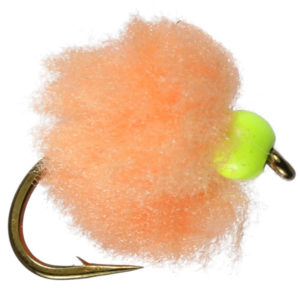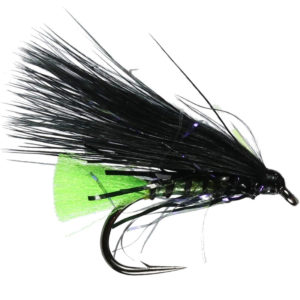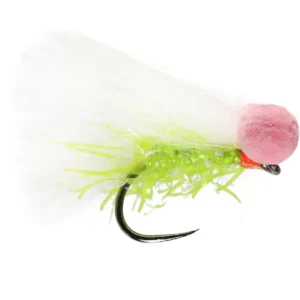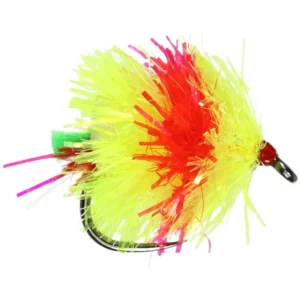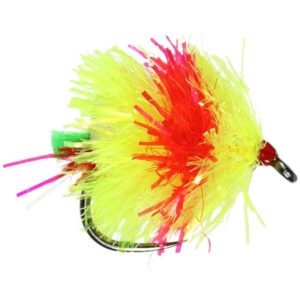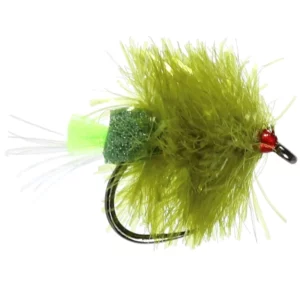The anticipation for the start of the trout season is unbearable for most of us. In most instances, a lot of us have had to endure the 4 months of no fishing due to the closed season. Those lucky enough to have yearly stillwaters may have had the opportunity to wet a line through the winter and to land some nice trout along the way.
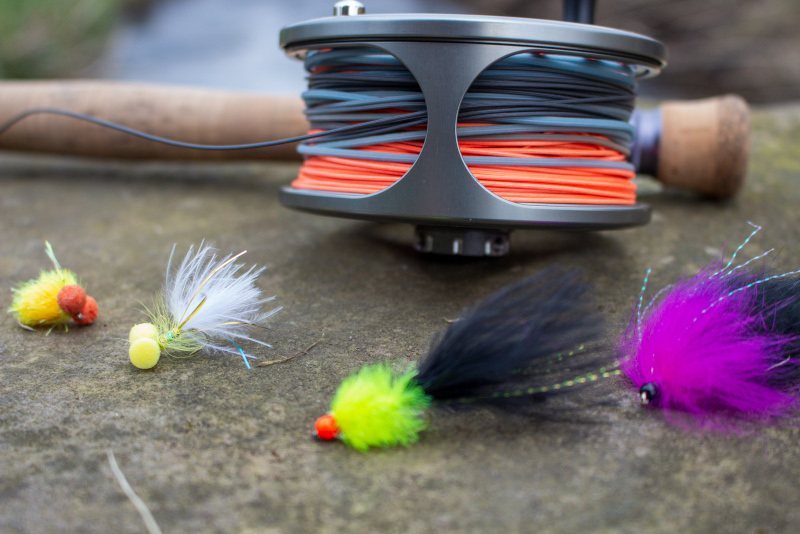
In this article, we will be providing you our top 3 go to tactics for targeting those early season rainbow trout. We will be breaking down the lines we use, the leader materials, the retrieves and more importantly our fly choice.
So without further ado, let’s dive straight into this article!
Bung setup
The bung, or strike indicator, is a bit like marmite, you either love it or hate it! Personally, we think it’s a great method for presenting a fly with an almost static approach as well as accurately fishing a specific depth, effortlessly.
The setup
Depending on your experience, opt for a 2 or 3 fly setup, spacing the flies 3 feet apart from each other. Check out our diagram below. The bung is designed to allow you to alter your fishing depth quickly and efficiently, this can be done by moving your sight indicator up or down the leader.
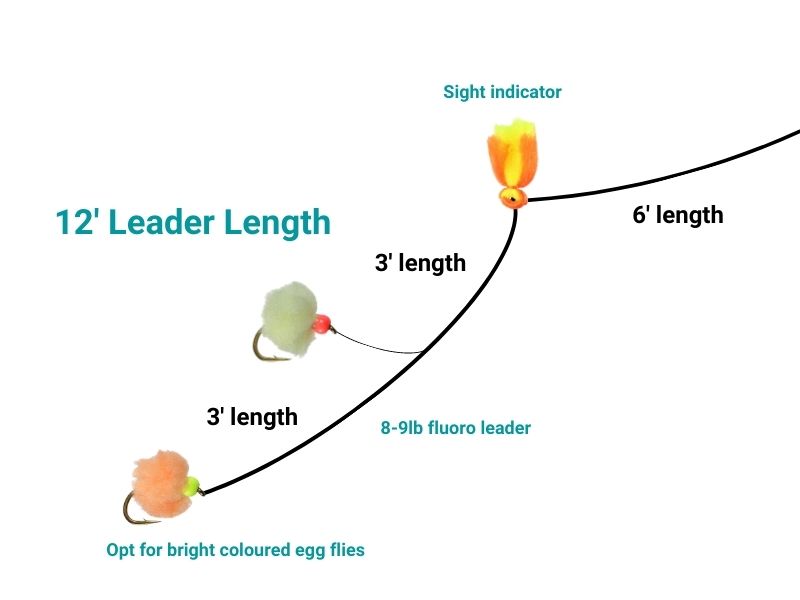
The retrieve
As we previously mentioned, the bung allows you to present an almost static fly at an accurate depth. So when it comes to the retrieve you want to ensure you keep ‘slow and static’ at the forefront of your mind.
Opting for a slow figure of eight retrieve ensures you keep in contact with your line and flies at all times, this ensures you can react quickly to the subtlest of takes. Any slack line and you will see a poor hook up ratio.
Click here to view our full range of strike indicators and bungs!
The flies
In regards to flies, we find egg patterns very effective at this time of the year, not only do they represent a trout egg imitation but they also imitate the pellets that the trout are feeding on – making them highly effective!
Opt for flies like the Sockeye egg and Cheese egg.
- Cheese Egg
- Sockeye Egstacy Egg
Other flies worth considering are Apps Bloodworm and Cat Bugs. These styles of flies offer two different variables. Firstly, they provide a larger profile in the water and secondly they stand out in the water thanks to their fluorescent colours. These patterns can be great for evoking a reaction strike due to their very intrusive presence in the water.
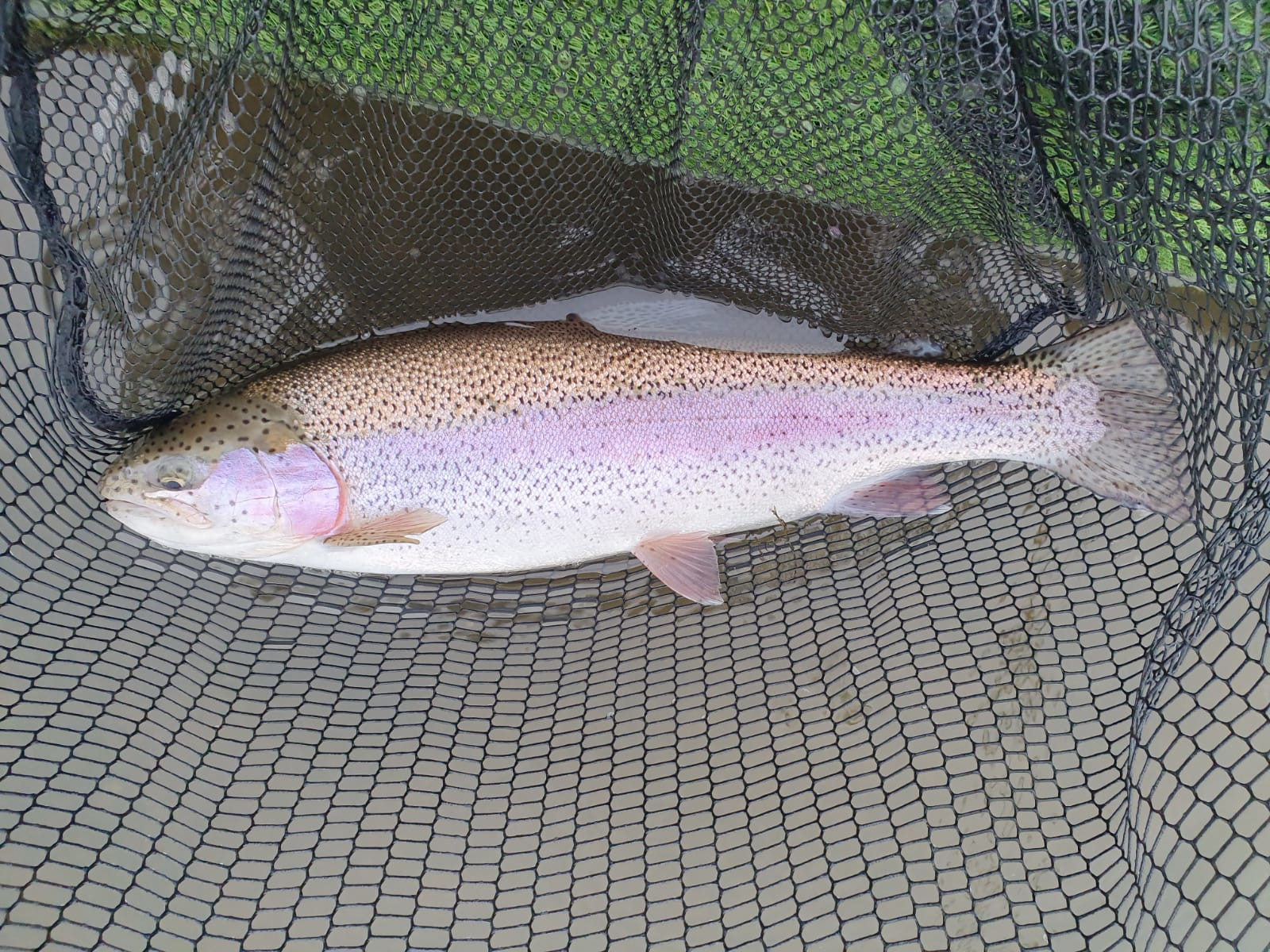
Early season trout that fell to an egg fly
Washing line setup
A classic method that can be used nearly all year round. To fish the washing line effectively, use either a midge tip or floating line. The midge tip line will allow you to present your flies slightly deeper due to the intermediate tip usually associated with these lines whilst the floating line will allow you to target fish that may be sitting higher in the water column.
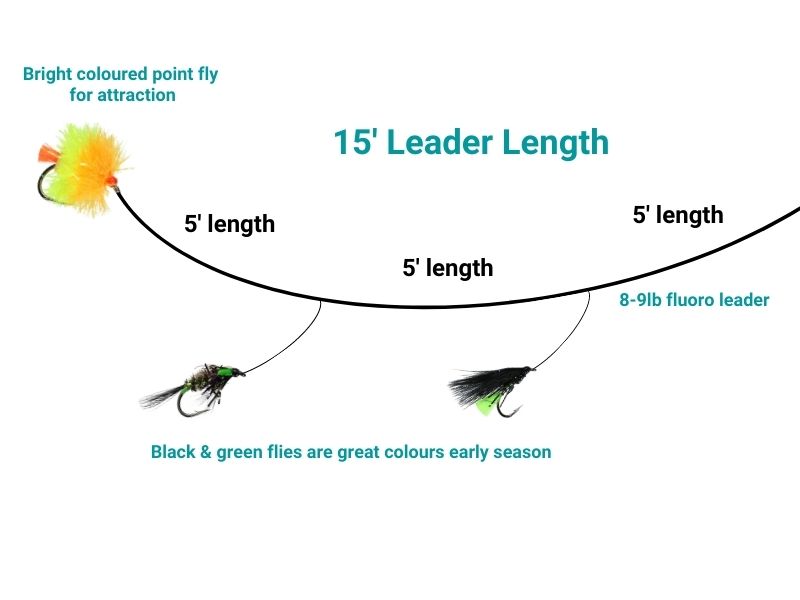
The Retrieve
The washing line method is very flexible when it comes to retrieves, opt for a slower figure of eight retrieve to begin with but remember to change the retrieve speed and style up throughout the day. The slightest change in the cadence of your retrieve could be the difference of catching and ending the session with a blank.
The flies
When it comes to fly choice, always opt for an attractor fly on the point, something that is bright in colour and is somewhat buoyant. Opt for flies such as the Candyman booby, Tequila FAB or even a Meteor FAB.
This point fly is to hold up the dropper flies and create a slight bow in the leader to create the washing line effect.
Fish two or three flies on the leader, spacing the flies evenly from each other, opt for two arms length between them or up to 5 feet in length.
- Diawl Bach UV Black & Green
- Viva Straggle Cormorant
- Green Quill Cormorant
- Woofter booby
- Rockt FAB
Sinking line
Temperatures can fluctuate year on year so you may find that there is still a cold snap in the air. If this is the case, fishing near the bottom with a sinking line may be worth considering. The trouts’ metabolic rate can slow down in the colder months making them somewhat lethargic. Below, we highlight some of our favourite choices for early season.

Recommended Sinking Lines
Di3 sweep – Ideal for fishing the upper layers of water. The sweep line provides a bit more hang time whilst allowing you to search the upper layers of the water efficiently.
Di3 – A straight Di3 gives you a 3 inch per second sink rate and is the go to line density for fishing a two booby setup and is great for targeting those mid to deep water fish.
Di5 sweep – Yes, another sweep line to the mix. What makes sweep lines so effective is the way they fish. The line fishes in an arc, this is because the line’s belly sinks quicker than the head of the line.
This makes it a great line for fishing buoyant flies like boobies and FABs from. It not only slows down the flies presentation but the sweep lines put a different angle on your leader which seems to bring out a better action in these buoyant patterns. The Di5 sweeping line is great for searching deeper water more effectively.
Top tip: Tie your boobies on with a Rapala knot and try a figure eight retrieve. The Rapala knot provides additional articulation which makes the booby move side to side on the retrieve.
The depth of your venue will dictate the line density that you opt for and how quickly you require your flies to sink.
Click here to view our full range of sinking lines!
The Retrieve
Like most techniques, varying the retrieve is key! Trying a slow figure of eight to a roly poly retrieve all have their place. Experimenting with the retrieve will soon determine what the trout are up for on that given day.
Flies
When it comes to fly choice, you want to opt for something bright and large in profile. There are a few reasons why we opt for these styles of flies! Early season means there is usually a bit of coloured water present due to consistent winter rain showers and high winds, so having a team of flies that can break up the murky water and stand out is beneficial. Secondly, most fisheries have been closed all winter, so bright and large profile flies are great for triggering reaction strikes from aggressive trout.
Fish a 2 fly cast maximum, there is a good chance of a double hook up early season. So opt for a higher breaking strain fluorocarbon, something of an 8lb or even 9lb breaking strain. Space your 2 flies 5 feet apart on a 12-15ft leader.
Top tip: Use FABs as an alternative fly if boobies are banned from smaller stillwaters.
- C Cat Booby
- White Humi Booby
- FAB Rocket – Barbless
- FAB UV Olive



